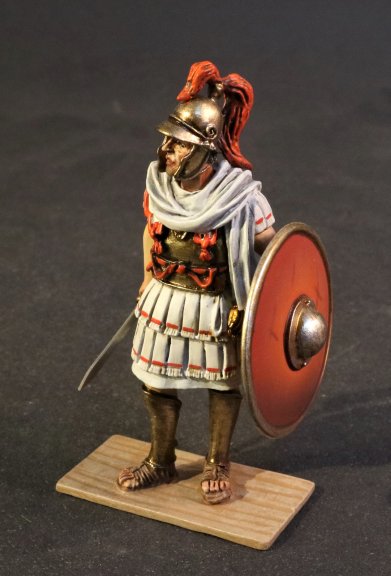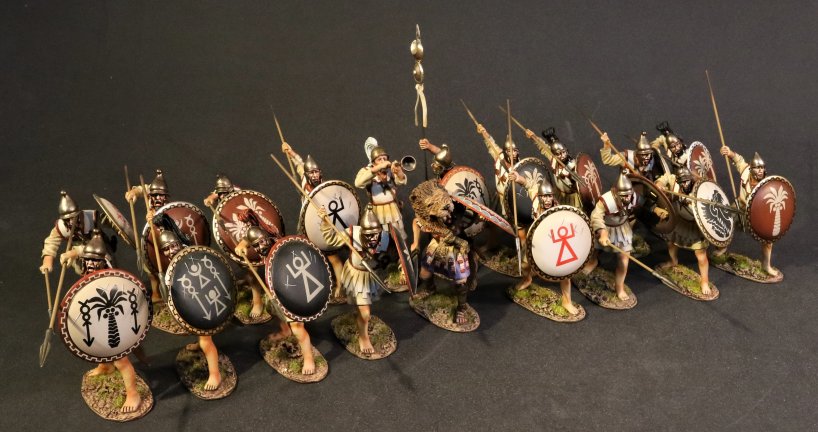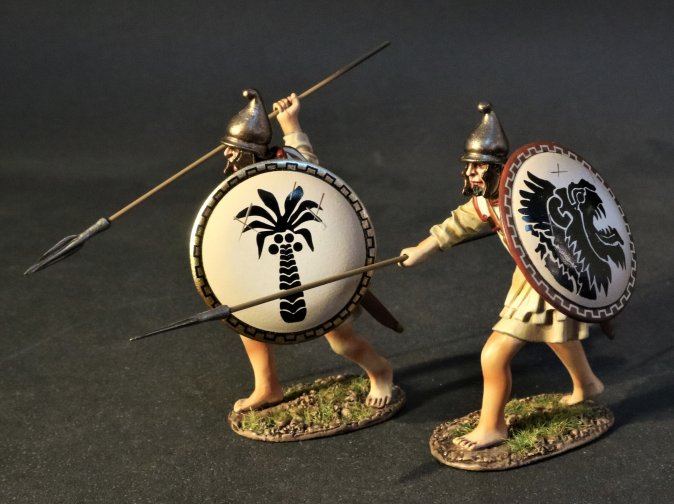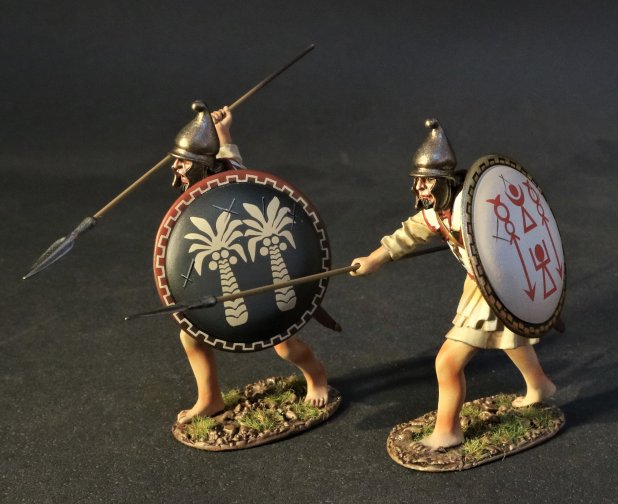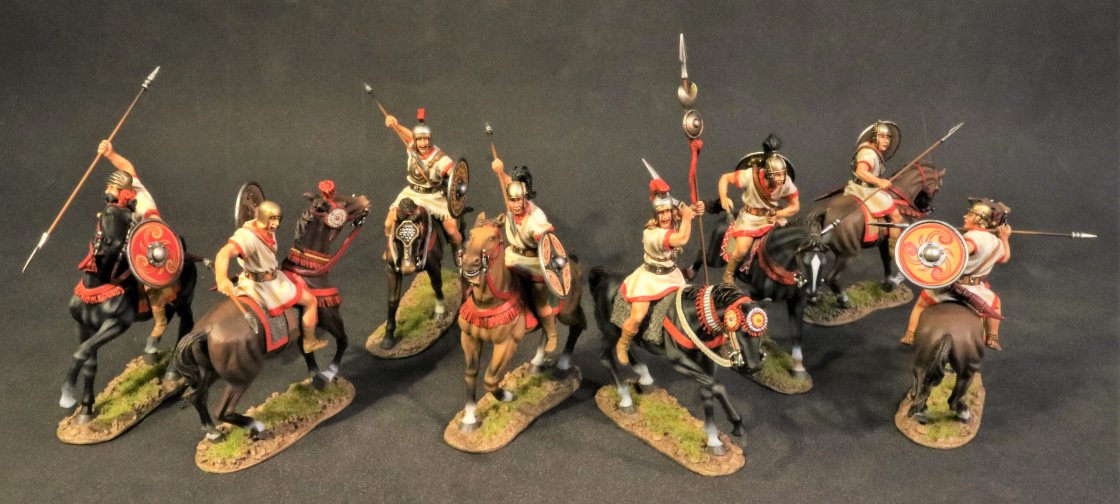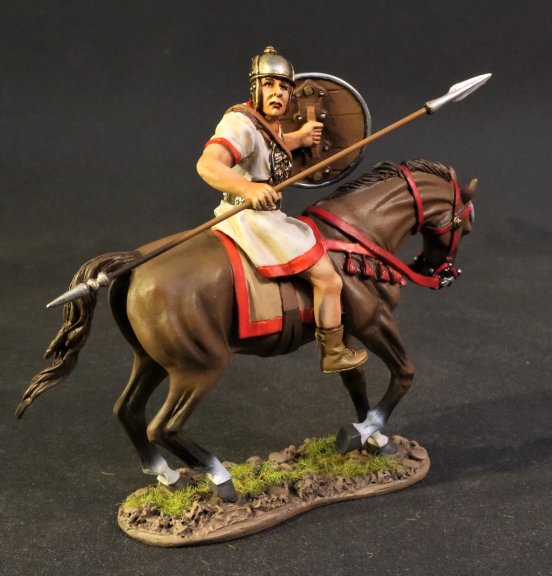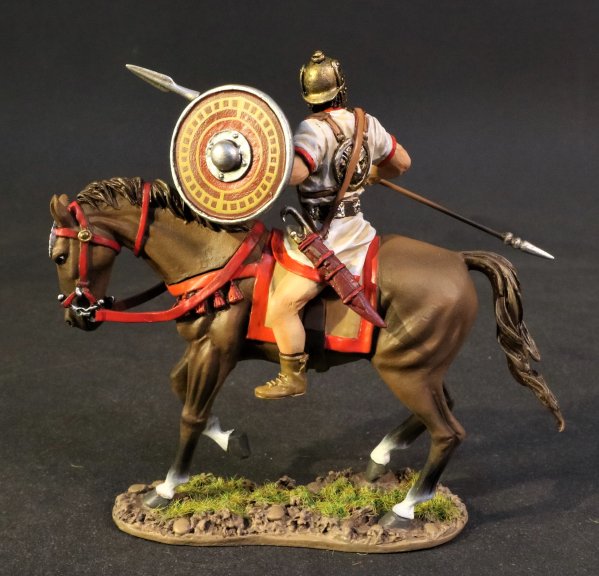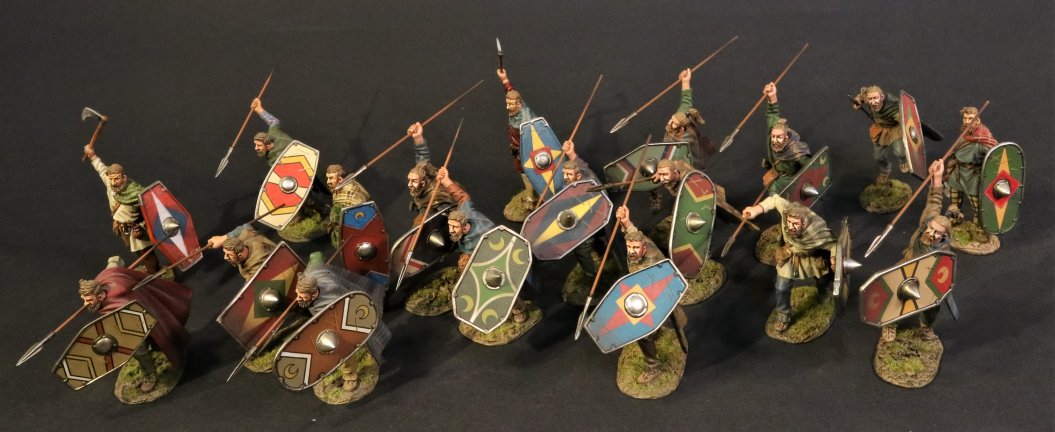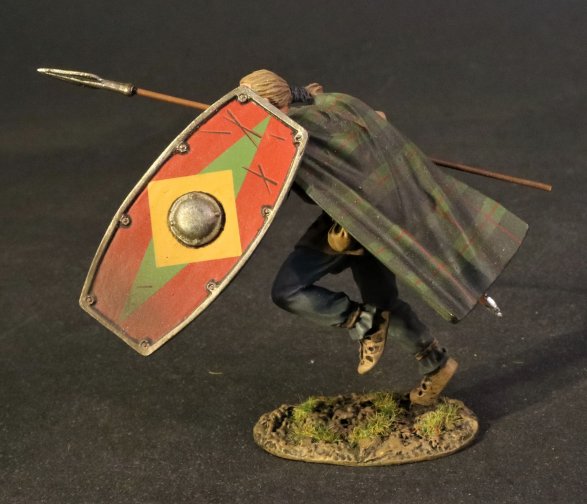- Joined
- Feb 2, 2011
- Messages
- 2,338
NEW RELEASES FOR MARCH 2021
THE ANCIENTS COLLECTION
ARMIES AND ENEMIES OF ANCIENT ROME
REPUBLICAN ROMANS
ROMAN MARCHING CAMP
Roman Marching camps were used to protect an army while away from a permanent base during a campaign or when conducting other military operations.
These camps were constructed by the Romans at the end of a day of marching or conducting other exercises in the field.
At the conclusion of each day’s march, legionary troops on the move were buttembled at a site carefully selected at the day’s start. For the next three hours or more, they were put to work digging a perimeter ditch, erecting a rampart, and buttembling a palisade with prefabricated materials. Polybius wrote that the standard Republican-era design was in the shape of a square, but always had to conform to the lay of the land and the numbers of men and animals to be quartered in the camp.
Vegetius wrote that the camps should be constructed taking into account the configuration of the ground. He warned that a secure marching-camp must be placed near a source of plentiful water, wood, and forage and not be overlooked by higher ground.
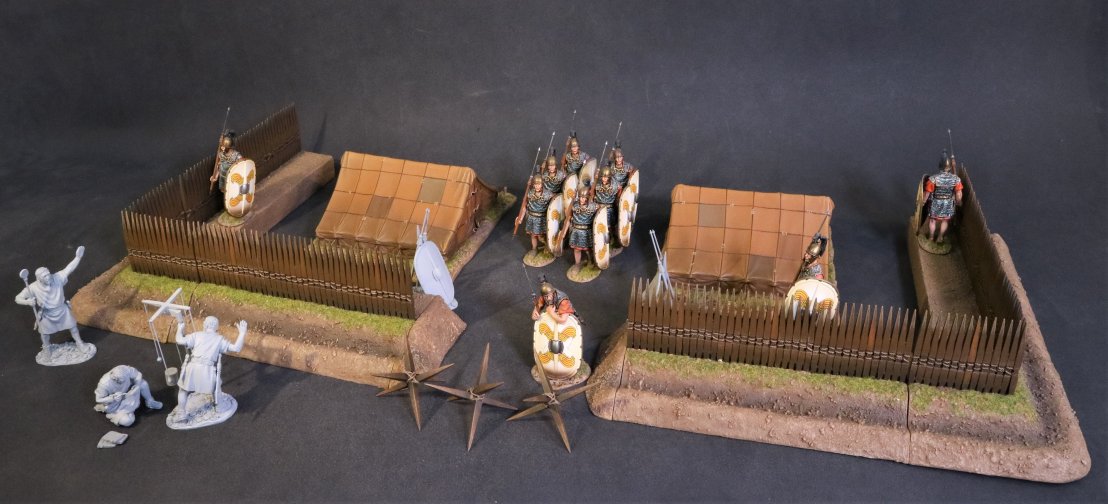
The GROMA or Gruma was a Roman Surveying instrument. It comprised of a vertical staff with horizontal cross-pieces mounted at right angles on a bracket. Each cross piece had a plumb line hanging vertically at each end. It was used to survey straight lines and right angles, thence squares or rectangles.
They were stabilized on the high ground and pointed in the direction it was going to be used. The buttistant would step back 100 steps and place a pole. The surveyor would tell the buttistant where to move the pole, who would then set it down.
The groma surveying instrument may have originated in Mesopotamia or Greec before the 4[SUP]th[/SUP] Century BC, and is believed to have been brought to Rome by the Etruscans.
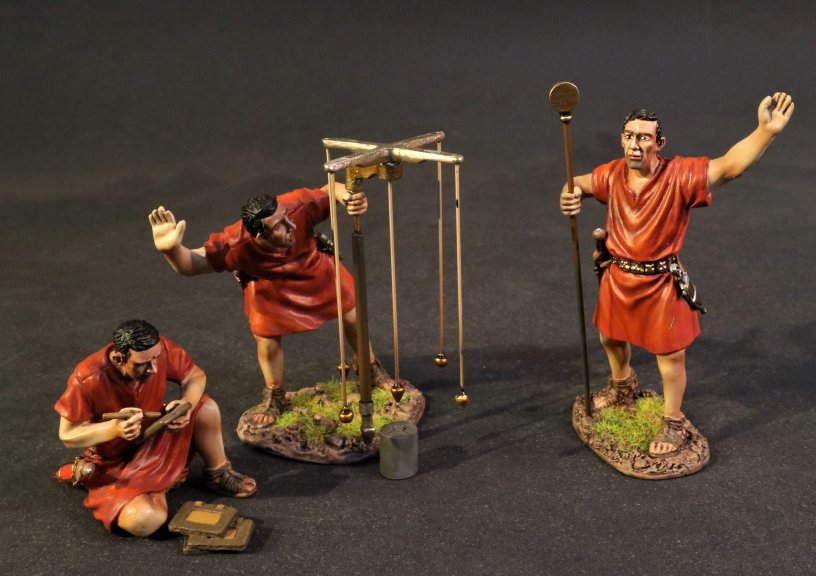
RRCAMP-10R
ARMIES AND ENEMIES OF ANCIENT ROME,
THE ROMAN ARMY OF THE MID REPUBLIC,
ROMAN MARCHING CAMP,
ROMAN GROMATICI.
(6 pcs)
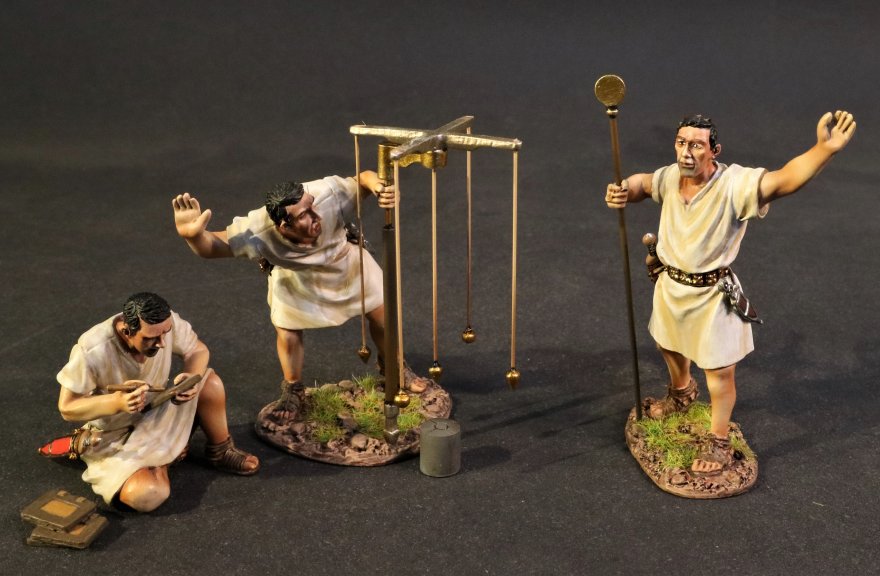
RRCAMP-10W
ARMIES AND ENEMIES OF ANCIENT ROME,
THE ROMAN ARMY OF THE MID REPUBLIC,
ROMAN MARCHING CAMP,
ROMAN GROMATICI.
(6 pcs)
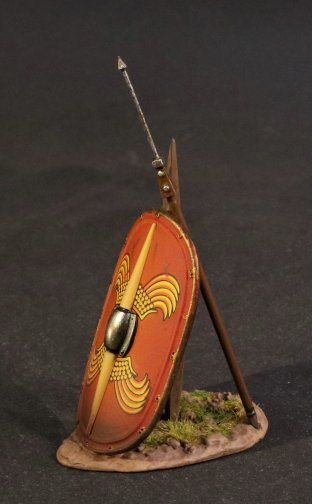
RRCAMP-04R
ARMIES AND ENEMIES OF ANCIENT ROME,
THE ROMAN ARMY OF THE MID REPUBLIC,
ROMAN MARCHING CAMP,
ROMAN SCUTUM, SUDIS AND PILUM.
(2 pcs)
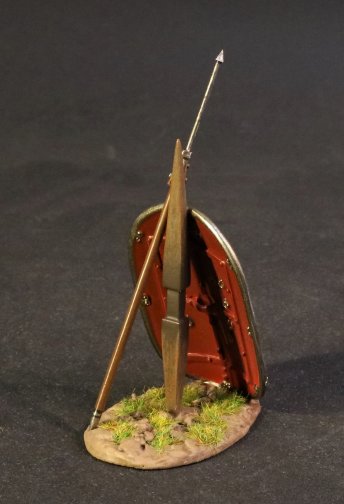
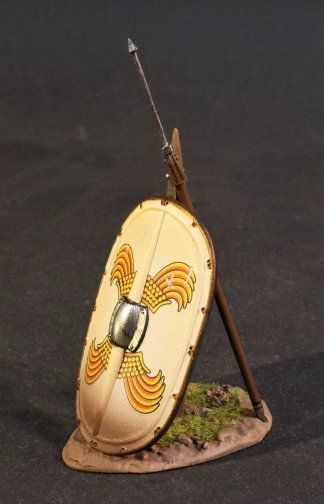
RRCAMP-04W
ARMIES AND ENEMIES OF ANCIENT ROME,
THE ROMAN ARMY OF THE MID REPUBLIC,
ROMAN MARCHING CAMP,
ROMAN SCUTUM, SUDIS AND PILUM.
(2 pcs)
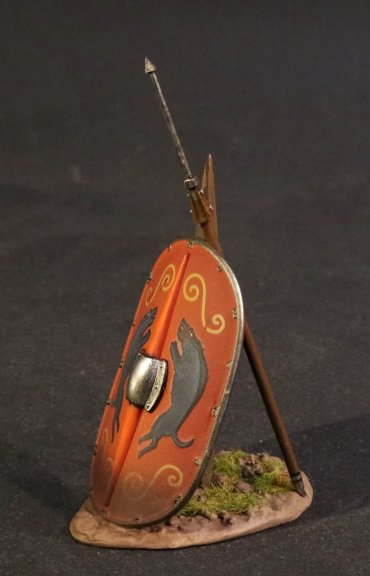
MRRCAMP-04R
ARMIES AND ENEMIES OF ANCIENT ROME,
THE ROMAN ARMY OF THE MID REPUBLIC,
ROMAN MARCHING CAMP,
ROMAN SCUTUM, SUDIS AND PILUM.
(2 pcs)
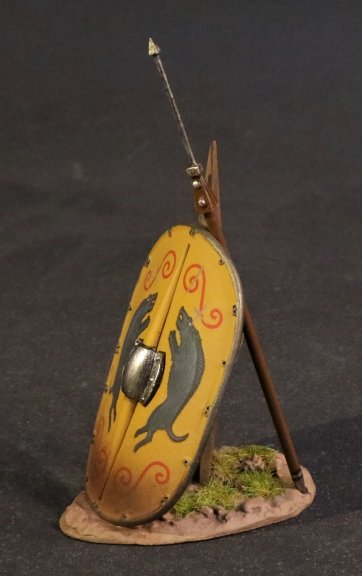
MRRCAMP-04Y
ARMIES AND ENEMIES OF ANCIENT ROME,
THE ROMAN ARMY OF THE MID REPUBLIC,
ROMAN MARCHING CAMP,
ROMAN SCUTUM, SUDIS AND PILUM.
(2 pcs)
A military tribune was an officer of the Roman Army who ranked below the Legate and above the Centurion. Young men of equestrian rank often served as military tribune as a stepping stone to the senate.
In the Republican period there were six appointed to each legion. Authority was given to two at a time.
To attain the position of tribune, one only needed to be a member of the ruling class. By 311 BC the people acquired the right to elect sixteen tribunes of the soldiers, that is four out of the six tribunes buttigned to each of the four legions that formed the Roman Army.
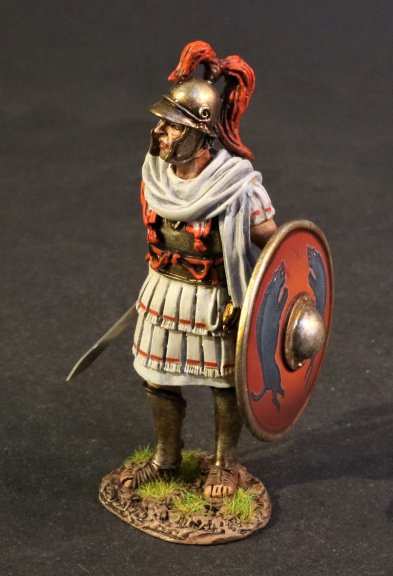
MRR-02R
ARMIES AND ENEMIES OF ANCIENT ROME,
THE ROMAN ARMY OF THE MID REPUBLIC,
ROMAN TRIBUNE.
(1 pc)

MRR-02Y
ARMIES AND ENEMIES OF ANCIENT ROME,
THE ROMAN ARMY OF THE MID REPUBLIC,
ROMAN TRIBUNE.
(1 pc)
THE ANCIENTS COLLECTION
ARMIES AND ENEMIES OF ANCIENT ROME
REPUBLICAN ROMANS
ROMAN MARCHING CAMP
Roman Marching camps were used to protect an army while away from a permanent base during a campaign or when conducting other military operations.
These camps were constructed by the Romans at the end of a day of marching or conducting other exercises in the field.
At the conclusion of each day’s march, legionary troops on the move were buttembled at a site carefully selected at the day’s start. For the next three hours or more, they were put to work digging a perimeter ditch, erecting a rampart, and buttembling a palisade with prefabricated materials. Polybius wrote that the standard Republican-era design was in the shape of a square, but always had to conform to the lay of the land and the numbers of men and animals to be quartered in the camp.
Vegetius wrote that the camps should be constructed taking into account the configuration of the ground. He warned that a secure marching-camp must be placed near a source of plentiful water, wood, and forage and not be overlooked by higher ground.

The GROMA or Gruma was a Roman Surveying instrument. It comprised of a vertical staff with horizontal cross-pieces mounted at right angles on a bracket. Each cross piece had a plumb line hanging vertically at each end. It was used to survey straight lines and right angles, thence squares or rectangles.
They were stabilized on the high ground and pointed in the direction it was going to be used. The buttistant would step back 100 steps and place a pole. The surveyor would tell the buttistant where to move the pole, who would then set it down.
The groma surveying instrument may have originated in Mesopotamia or Greec before the 4[SUP]th[/SUP] Century BC, and is believed to have been brought to Rome by the Etruscans.

RRCAMP-10R
ARMIES AND ENEMIES OF ANCIENT ROME,
THE ROMAN ARMY OF THE MID REPUBLIC,
ROMAN MARCHING CAMP,
ROMAN GROMATICI.
(6 pcs)

RRCAMP-10W
ARMIES AND ENEMIES OF ANCIENT ROME,
THE ROMAN ARMY OF THE MID REPUBLIC,
ROMAN MARCHING CAMP,
ROMAN GROMATICI.
(6 pcs)

RRCAMP-04R
ARMIES AND ENEMIES OF ANCIENT ROME,
THE ROMAN ARMY OF THE MID REPUBLIC,
ROMAN MARCHING CAMP,
ROMAN SCUTUM, SUDIS AND PILUM.
(2 pcs)


RRCAMP-04W
ARMIES AND ENEMIES OF ANCIENT ROME,
THE ROMAN ARMY OF THE MID REPUBLIC,
ROMAN MARCHING CAMP,
ROMAN SCUTUM, SUDIS AND PILUM.
(2 pcs)

MRRCAMP-04R
ARMIES AND ENEMIES OF ANCIENT ROME,
THE ROMAN ARMY OF THE MID REPUBLIC,
ROMAN MARCHING CAMP,
ROMAN SCUTUM, SUDIS AND PILUM.
(2 pcs)

MRRCAMP-04Y
ARMIES AND ENEMIES OF ANCIENT ROME,
THE ROMAN ARMY OF THE MID REPUBLIC,
ROMAN MARCHING CAMP,
ROMAN SCUTUM, SUDIS AND PILUM.
(2 pcs)
A military tribune was an officer of the Roman Army who ranked below the Legate and above the Centurion. Young men of equestrian rank often served as military tribune as a stepping stone to the senate.
In the Republican period there were six appointed to each legion. Authority was given to two at a time.
To attain the position of tribune, one only needed to be a member of the ruling class. By 311 BC the people acquired the right to elect sixteen tribunes of the soldiers, that is four out of the six tribunes buttigned to each of the four legions that formed the Roman Army.

MRR-02R
ARMIES AND ENEMIES OF ANCIENT ROME,
THE ROMAN ARMY OF THE MID REPUBLIC,
ROMAN TRIBUNE.
(1 pc)

MRR-02Y
ARMIES AND ENEMIES OF ANCIENT ROME,
THE ROMAN ARMY OF THE MID REPUBLIC,
ROMAN TRIBUNE.
(1 pc)


